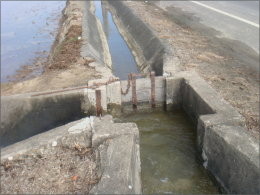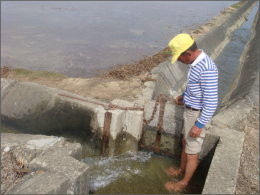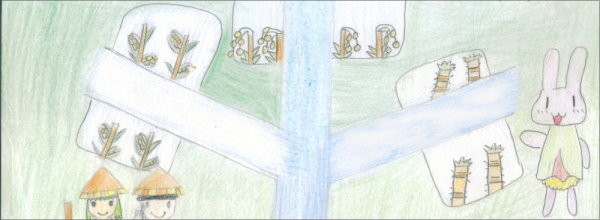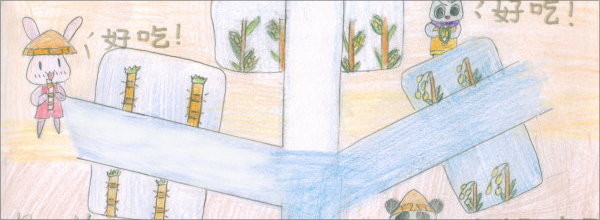|
|
|||||||
 |
|||||||
|
|
|||||||
|
|
..........................................................................................................................................................................................................
▌From Small Assembly to Irrigation Group
When Chia-Nan Canal constructions were still underway, beneficiaries of
the canal (landowners and tenants entitled to water use) were requested
to form “small assemblies” in order to contribute manpower for the
construction of canal ends. (Field ditches and drainage ditches) After
water was supplied through the canal for irrigation, Public
Reservoir/canal Chia-Nan canal Assembly then classifies the assembly as
to water supply area and demanded members of each assembly (mostly
landowners, and tenants) organize small assemblies to take charge of
canal management, repair, water distribution, dispute settling, farmland
exchange, nursery gardening, and land improvement etc. Above a small
assembly was “Small Assembly Joint Association”, which was under the
supervision of the monitor office. A monitor office was a department
stations in each locality assigned by Chia-Nan Canal Assembly. It was
mainly responsible for water allotment. It is similar in nature to a
work station now.
▌Three-Year-Crop-Rotation
Although the irrigation area of Chia-Nan
Canal is said to be 150,000 hectares in area, it is difficult to supply
water to all farmlands in actual practice. At the time of Chia-Nana
Canal designing, Ha Ta Yo I Shi had already contemplated on the
possibility of water inadequacy. Therefore, the three-year-crop-rotation
was proposed at the time of his engineering design proposal.
First year left [rice-abundant water supply] middle [sugarcane-scarce water supply] right [grain-scarce water supply]Enlarge
Second year left【grain-scarce water supply】middle【rice-abundant water supply】right【sugarcane-scarce water supply】Enlarge
Third year left【sugarcane-scarce water supply】middle【grain-scarce water supply】right【rice-abundant water supply】Enlarge
▌Is the three-year-crop rotation acceptable for farmers?
From landowner or farmers’ view point, not being able to decide what to grow on their lands makes them feel like “workers” hired by The Office of the Taiwan Governor General and leaving their fate to the government. Also, the Sugar Corporation collaborated with the government at the time. It did not comply with the crop rotation policy. The farmers felt as if the government was in favor of Sugar Corporation. Naturally, the three-year-crop-rotation policy was not an acceptable plan for them.
Rotation Irrigation Notice Provided by Lui Wan-Li’s grandfather(Some contents are in image mosaic to protect privacy)
▌Water Rent Problem
The farmers complained about the “small assembly” implementations, the
mandatory three-year-crop-rotation, and the fact that they were forced
to comply with what to cultivate. They were angrier about the “water
rent” policy. When Chia-Nan canal was still underway, landowners and
farmers not only had to work, they also had to render “temporary tax
levy” and shoulder the majority of the expenditure for the canal
engineering. After the canal was open for use, they had to start paying
“regular water rent” and special water rent”. “Regular water rent” was
the expenses required to sustain Chia-Nan Canal Assembly and periodic
repair and maintenance of the reservoir/canal. “Special water rent” was
collected to repay the bank for loans borrowed to build the canal.
By the period of the R.O.C., water rent remained the most important
issue of concern for farmers. Other than rendering regular membership
fees (water rent), the farmers had to pay for major construction fees.
For the Pai-Ho Reservoir construction in 1972 for instance, NT$6,000 of
construction fees had to be paid per 1 hectare of land or NT$12,000 a
year. (Twice annually) At the time, the living expenses of a child from
a rural family studying in Taipei was only NT$300 a month.
1985 Irrigation Association Membership Fee Levy Form Provided by Lui Wan-Li’s grandfather(Some contents are in image mosaic to protect privacy)
|
||||||
 |
|||||||
|
|
|||||||
|
▍Hsin Chia Elementary School ˙Houbi Township, Tainan County , Taiwan (R.O.C.)˙2008˙1024*768 |
|||||||






